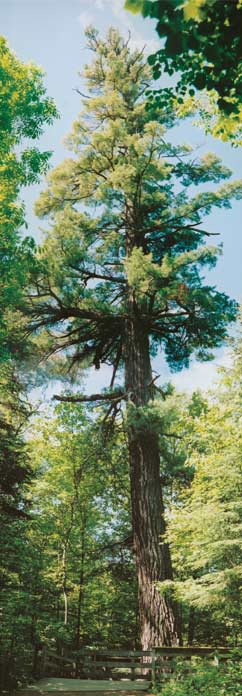PLANTING SEEDS
Planting trees using seeds has its place, but it may not meet every ones’ needs. Seeding using broadcast methods is quick and easy to do relative to the stoop labor involved in all other methods. Seeds work particularly well if you have a youth program wanting to help reforest and it is traveling through public lands where planting of native species is encouraged (such as in the Superior National Forest, except in the BWCAW). Seeds are the best possible way to plant on cliffs or banks where you can broadcast seed over the edge (taking wind into account) rather than disturbing the soil even more with boots and planting bars. Here is some information on seed planting if you choose to go this route:
- It’s a lot like planting grass seed. If you are absolutely sure you will plant the next day, soak the seeds you’re sure will go in the ground in clean water for 24 hours prior to planting. This may help increase your germination rate, though it’s not crucial.
- Spring Planting: Seeds of many species planted in early spring while the melt and runoff water is still in the soil have a good chance of success. The extra moisture is crucial to germination and early growth. Their greatest danger is birds and mice (voles) which consider them excellent food. Some species (including white pine, white spruce and jack pine) must have their seeds “stratified” – put through a false winter cycle – for most of them to germinate. Be sure to ask your supplier about this. There will be an article on how to stratify on this web site later in the year. For those species, unstratified seeds are best sown in the late fall (mid-October in most places, just before or just after the first snows). The real winter will stratify them and the late sowing means less chance mice and birds will find them. At least one expert tells me that sowing any time other than early spring or late fall is a complete waste of seed, mostly because of access to moisture.
- To “Broadcast” seed: Strew handfuls of seed widely (a few seeds over a wide area) in a promising setting. Seeds falling in duff will not grow, so try to find or create access to real mineral soil (“dirt”). Not all that many will chance to fall in just the right dirt-and-water spot, but it’s easy and it’s quick. Best done in early spring or late fall. Water if possible.
- To “Broadcast with care”: First “scarify” the ground to be sown. Use a rake or stick or your foot to move the duff away and loosen the dirt underneath. Duff is the usual top layer in northern woods made up of needles, small branches, and general “stuff”. Your seeds MUST be planted in the mineral soil BELOW the duff if they are to grow. Again strew the seeds widely and sparingly, and reagitate the dirt to cover the seeds with 1/4” of soil. Germination results will be much better than the method above. Water if possible.
- To plant individually (recommended): Pick your spot. Use clippers to “release” the area – prune competing low brush (hazel, alder, etc.) back about 18” – 24” so your seed(s) gets most of the water and soil nutrients that are there. Scarify – move duff and debris away and loosen the soil. Poke a 1/4” hole in the dirt, place the seed and cover with dirt. You can plant three or more seeds very close together and thin later depending on which grew the best. Water if possible. Repeat at the next spot.
- Watering: Seeds need moisture to germinate. A regular bucket or the large oatmeal pail in a cook kit will do fine. If you are right there again tomorrow, hit those spots with more buckets. You can also use regular hose nozzles, sprinklers, soakers, etc. If you have a water pump or fire hose, a fire nozzle set on a coarse mist can water a lot in a short time. Do not be so direct that you blow the seeds back out of the ground. It’s considered very clever to plant right before you know it will rain gently for the next two days.


